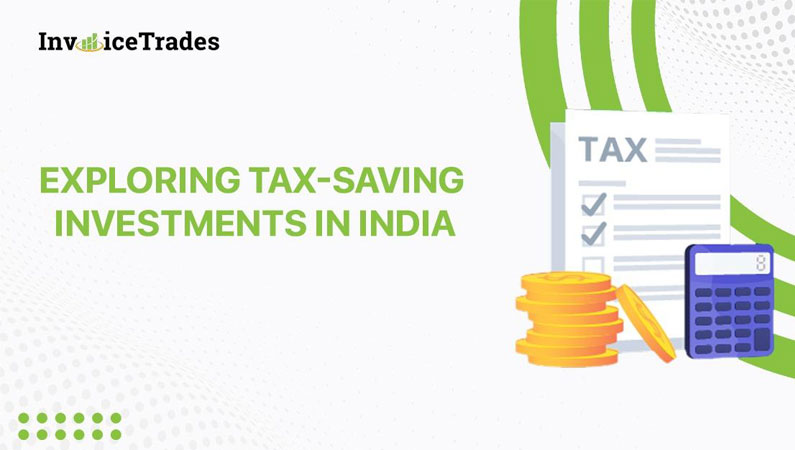Not only reduce your taxable income but also build wealth for future financial goals. Tax-saving investments in India offer dual benefits: reducing your tax liability and creating a disciplined approach to savings. Various sections of the Income Tax Act, 1961, such as Section 80C, 80D, and 80G, provide avenues to optimize tax savings while securing your financial future.
1. Popular Tax-Saving Investment Options in India
India offers a wide range of tax-saving investments catering to different risk appetites and financial goals. Some of the popular options include:
- Equity-Linked Savings Scheme (ELSS): Tax-saving mutual funds with high returns and a 3-year lock-in period.
- Public Provident Fund (PPF): A risk-free long-term savings option with attractive interest rates and tax benefits.
- National Pension Scheme (NPS): A government-backed retirement savings plan offering tax deductions.
- 5-Year Tax-Saving Fixed Deposits: Fixed-income investments with tax benefits under Section 80C.
- Unit Linked Insurance Plans (ULIPs): Life insurance products offering both investment and tax-saving benefits.
- Life Insurance Policies: Secure your family's future while claiming deductions under Section 80C.
2. Exploring Section 80C Investments
Section 80C is one of the most utilized sections for tax-saving investments, offering deductions of up to ₹1.5 lakh annually. Key options include:
- ELSS: Offers market-linked returns with a short lock-in period of 3 years.
- PPF: Provides a risk-free investment with a 15-year lock-in and tax-free returns.
- Employees’ Provident Fund (EPF): A retirement savings tool for salaried employees.
- Sukanya Samriddhi Yojana (SSY): Designed for the girl child, offering high interest rates and tax benefits.
- Senior Citizens’ Saving Scheme (SCSS): Ideal for retirees, providing steady returns with tax benefits.
3. Health Insurance and Section 80D Benefits
Health insurance not only safeguards you during medical emergencies but also provides tax benefits under Section 80D:
- Self and Family: Premiums for health insurance policies for self, spouse, and children are deductible.
- Parents: Additional deductions for premiums paid for parents (₹50,000 if they are senior citizens).
- Preventive Health Check-Ups: Deduction of up to ₹5,000 annually. Investing in health insurance ensures both financial protection and tax savings.
4. National Pension System (NPS) Under Section 80CCD
The NPS is a robust retirement savings option, offering:
- Section 80CCD(1): Deductions up to 10% of salary (or ₹1.5 lakh for others).
- Section 80CCD(1B): Additional deductions up to ₹50,000 for voluntary contributions. NPS is a low-cost, tax-efficient retirement solution that also provides flexibility in asset allocation.
5. Tax-Saving Fixed Deposits and Bonds
- 5-Year Tax-Saving Fixed Deposits: These provide guaranteed returns and are eligible for deductions under Section 80C.
- Tax-Free Bonds: Issued by government-backed institutions, these bonds provide tax-free interest income and are suitable for conservative investors seeking stable returns.
6. Other Tax-Saving Opportunities
- Charitable Donations (Section 80G): Contributions to eligible charitable organizations can reduce taxable income.
- Home Loan Benefits: Tax deductions on principal repayment (Section 80C) and interest payments (Section 24(b)).
- Education Loan Interest (Section 80E): Deductions for interest paid on education loans with no upper limit.
- Savings and Fixed Deposit Interest (Section 80TTA/80TTB): Deductions on interest income, especially for senior citizens.
7. Choosing the Right Tax-Saving Investment
When selecting tax-saving instruments, consider:
- Risk Tolerance: ELSS and NPS are ideal for high-risk appetites, while PPF and fixed deposits suit risk-averse individuals.
- Investment Horizon: Match the lock-in period of the investment with your financial goals.
- Financial Goals: Prioritize investments that align with short-term or long-term objectives.
8. Tips for Maximizing Tax-Saving Investments
- Start Early: Investing early ensures you reap the benefits of compounding.
- Diversify: Allocate funds across multiple tax-saving instruments for better risk management.
- Monitor Investments: Regularly review and rebalance your portfolio to stay aligned with your goals.
- Utilize Full Limits: Maximize the deductions available under various sections of the Income Tax Act.
9. Conclusion
Tax-saving investments are a critical component of sound financial planning. By choosing the right instruments, you can significantly reduce your tax burden while building a secure financial future. Whether you prefer market-linked options like ELSS or risk-free tools like PPF, there’s something for every investor.
